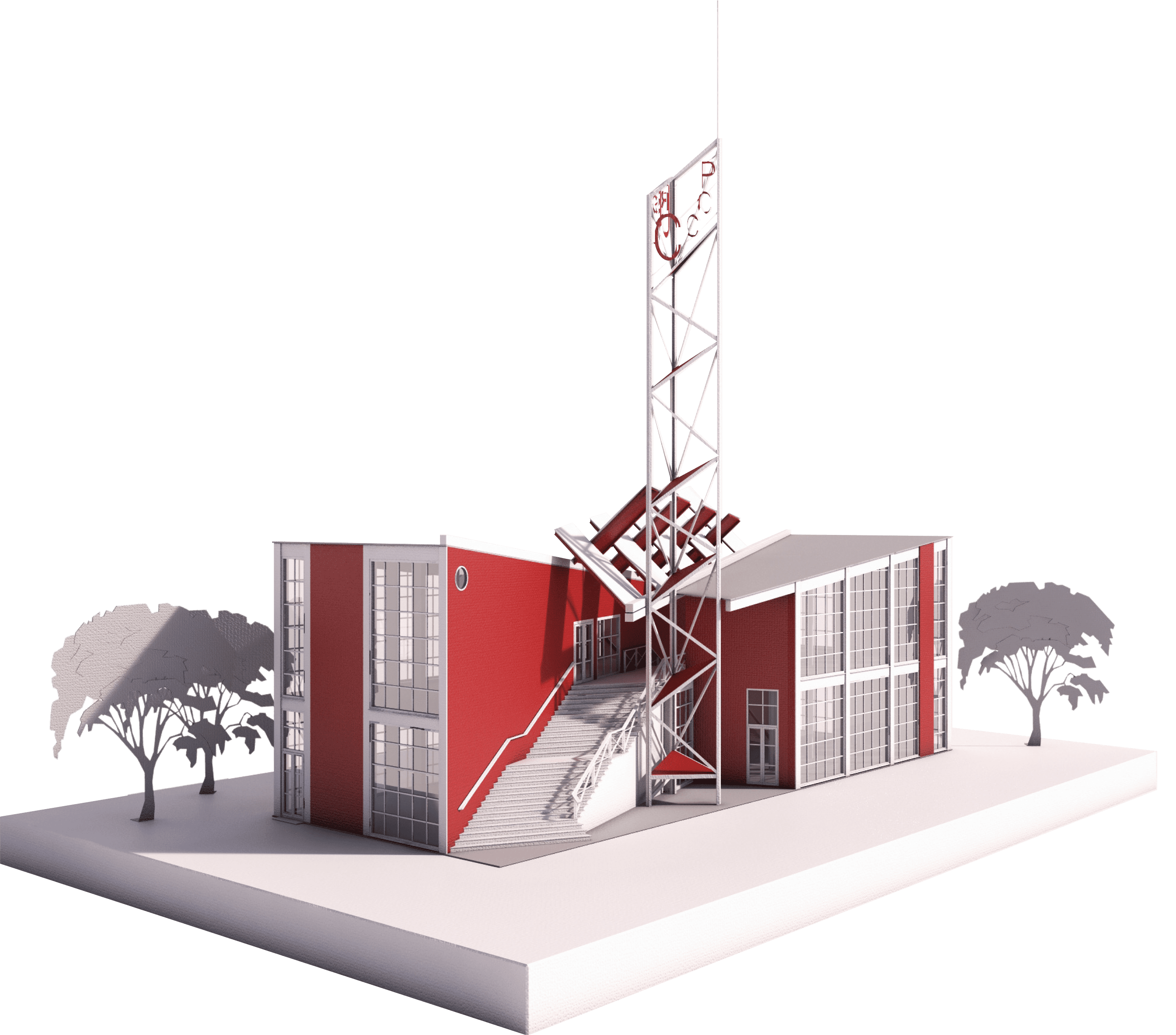From drafting board to construction
It was decided that the USSR’s participation in the exhibition was to be used to promote the leftist ideas in Europe, so the country approached its programme in earnest. All of the best architects from the USSR took part in a series of competitions to qualify as the USSR pavilion’s architect.
Thanks to the support from Lunacharsky, the then Minister of Education, Vladimir Mayakovsky, one of the most acclaimed Soviet poets, and Commissar Leonid Krasin, who headed up the Commissariat for Foreign Trade, a young and promising architect named Konstantin Melnikov got the nod. He travelled to Paris in the beginning of 1925.
The USSR pavilion at the International Exhibition in Paris in 1925. Architect: Konstantin Melnikov
Konstantin Melnikov in 1925
There were no windows in his building — the vertical inset walls alternated with the floor to glazing extending from the 2nd the 1st floor, the openwork mast served as a vertical landmark and flagpole. Melnikov took a rectangular building as a basis — nothing could be more traditional — and cut it diagonally with a staircase leading to the first floor. This diagonal is covered by shield-wings painted in red. All visitors to the pavilion, who would pass under these wings, would inevitably be coloured "red". This was the way the world architectural revolution took Europe by storm.
Contemporary reconstruction of some of Mel’nikov’s design specifications for the Soviet Pavilion of 1925
The construction budget was limited, and Melnikov designed a light and inexpensive wooden structure. On 26 January Melnikov arrived in Paris, and in February the finished pre-assembled parts of the building arrived. The construction budget was limited, and Melnikov designed a light and inexpensive wooden structure. Nine workers erected the pavilion in a space of one month.
The pavilion construction
The area on which we built the pavilion was not only small (29.5 by 11 metres), but also highly inconvenient to build on. Tramways ran across the site, which, subject the conditions imposed on us by the Parisian authorities, we were not allowed to remove. Consequently, the dimensions of the building were limited not only horizontally but also vertically
Almost the entire facade of the pavilion consisted of a glazed surface, thanks to which visitors to the exhibition could see the Soviet exposition without entering the room itself. And those observing from the stairs could see the entire exposition from above.
A 3D model of the pavilion
It was decided that the USSR’s participation in the exhibition was to be used to promote the leftist ideas in Europe, so the country approached its programme in earnest. All of the best architects from the USSR took part in a series of competitions to qualify as the USSR pavilion’s architect.
The area on which we built the pavilion was not only small (29.5 by 11 metres), but also highly inconvenient to build on. Tramways ran across the site, which, subject the conditions imposed on us by the Parisian authorities, we were not allowed to remove. Consequently, the dimensions of the building were limited not only horizontally but also vertically
Thanks to the support from Lunacharsky, the then Minister of Education, Vladimir Mayakovsky, one of the most acclaimed Soviet poets, and Commissar Leonid Krasin, who headed up the Commissariat for Foreign Trade, a young and promising architect named Konstantin Melnikov got the nod. He travelled to Paris in the beginning of 1925.
The USSR Pavilion
was one of the world’s first modernist architectural projects






































